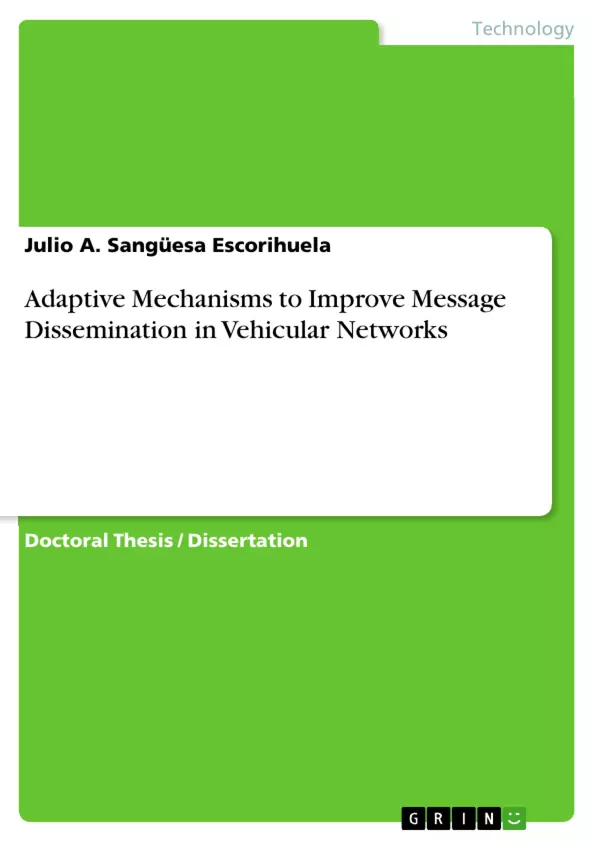In the past, people were focused on how to build efficient highways and roads. Over time, focus shifted to mechanical and automotive engineering, in the pursuit of building faster cars to surmount greater distances. Later on, electronics technology impacted the construction of cars, embedding them with sensors, advanced electronics, and communication devices, making cars more intelligent, efficient, and safe to drive on.
The applications and advantages of using Vehicular Networks (VNs) for enhancing road safety and driving efficiency are diverse, which explains why research in this area has recently emerged. In this Thesis, we focus on Vehicular Adhoc Networks (VANETs), which are a particular subclass of Vehicular Networks, that involves a set of equipped vehicles communicating with each other via wireless antennas, without requiring the use of any infrastructure.
In order to enhance the warning message dissemination process, usually necessary in VANET safety applications, we propose an adaptive broadcast dissemination scheme that automatically chooses the optimal broadcast depending on the complexity of the map and the instantaneous vehicle density in the area. Its main goal is to maximize the message delivery effectiveness, while generating a reduced number of messages, and thus, avoiding or mitigating broadcast storms.
Current research on VANETs usually focuses on analyzing scenarios representing common situations with average densities. However, situations with very low or very high vehicle densities are often ignored, whereas they are very common in real vehicular environments. The aim of broadcast dissemination schemes is to maximize message delivery effectiveness, something difficult to achieve in adverse density scenarios. To address this issue, in this Thesis, we propose the Junction Store and Forward (JSF) and the Neighbor Store and Forward (NSF) dissemina- tion schemes, specially designed to be used under low density conditions, as well as the Nearest Junction Located (NJL) scheme, specially developed for high density conditions.
Finally, we present a classification which includes the most relevant broadcast dissemination schemes specially designed for VANETs, highlighting their features, and studying their performance under the same simulation conditions, thus offering researchers a fair comparison. We consider that this evaluation can shed some light into the advantages and drawbacks of each solution.
- Quote paper
- Julio A. Sangüesa Escorihuela (Author), 2014, Adaptive Mechanisms to Improve Message Dissemination in Vehicular Networks, Munich, GRIN Verlag, https://www.grin.com/document/284223



